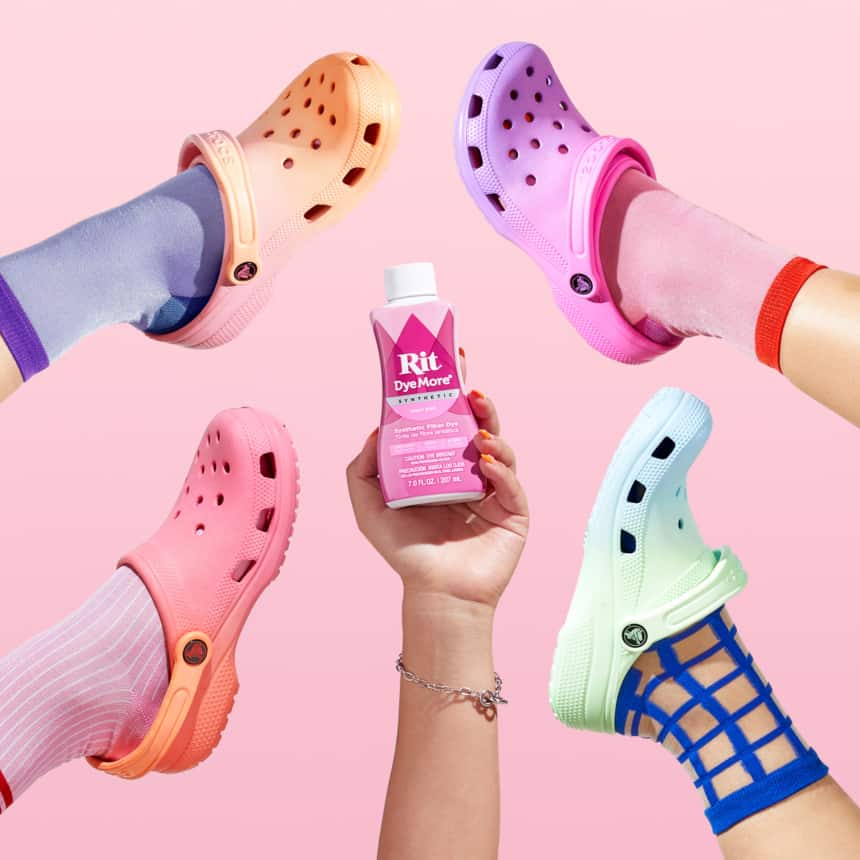How to Dip Dye Clogs
When our in-house dyer noticed her white clogs getting dirty, she did what she does best: dyed it. Using different dip dye techniques and Rit DyeMore for Synthetics, she was able to create these unique ombré shades that might have you rethinking your stance on the divisive shoe.
Supplies
- White Clogs
- Rit DyeMore for Synthetics
- Stainless Steel Pot
- Measuring Cup
- Rubber Gloves
- Paper Towels
Time
Total: {{ partial.tS6U.total }}
Difficulty
Beginner Total: {{ partial.tT6W.total }}
Instructions
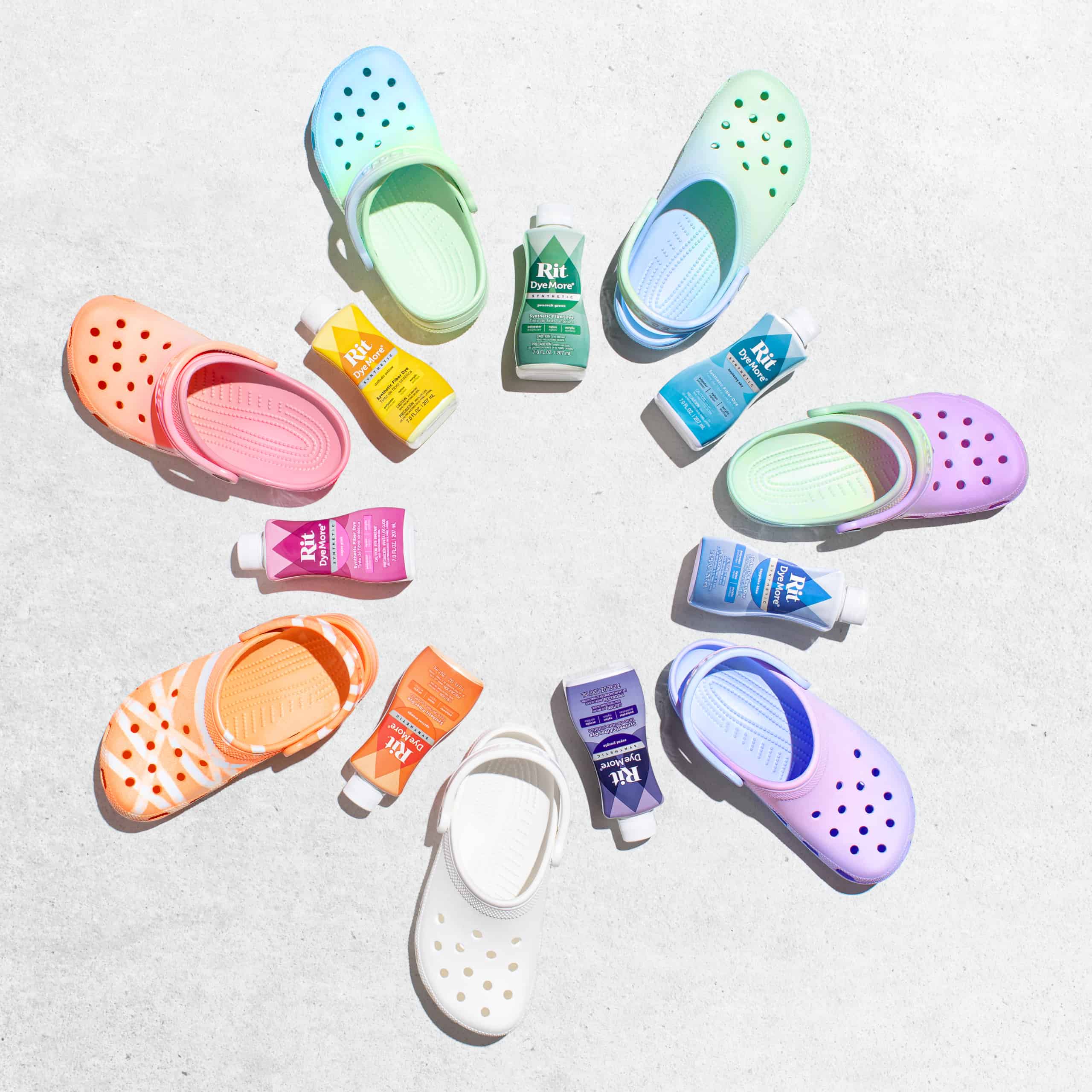
Disclaimer: Clogs may shrink due to the high temperature of the dyebath, we recommend going up a size if planning to dye them. If you notice any shrinkage, we suggest immediately walking around in the clogs with thick socks on while they’re still warm and flexible.
- Clean clogs in warm, soapy water. Scrub any scuff marks or dirt off that may interfere with dye absorption.
- Optional: Remove clog straps. Wipe clean and set aside.
- Wear rubber gloves to protect hands from getting stained and to insulate them when working with hot water.
- Due to the complexity of dyeing synthetics, you must use the stovetop method to maintain an almost boiling temperature for the duration of your dyeing (200ºF or greater).
- Fill a stainless steel pot with enough water to submerge the clog. We recommend using three gallons of water.
- Cover pot and heat water on stove top to just below boiling (or around 200ºF).
- When water begins to simmer, add well-shaken dye and mix well.
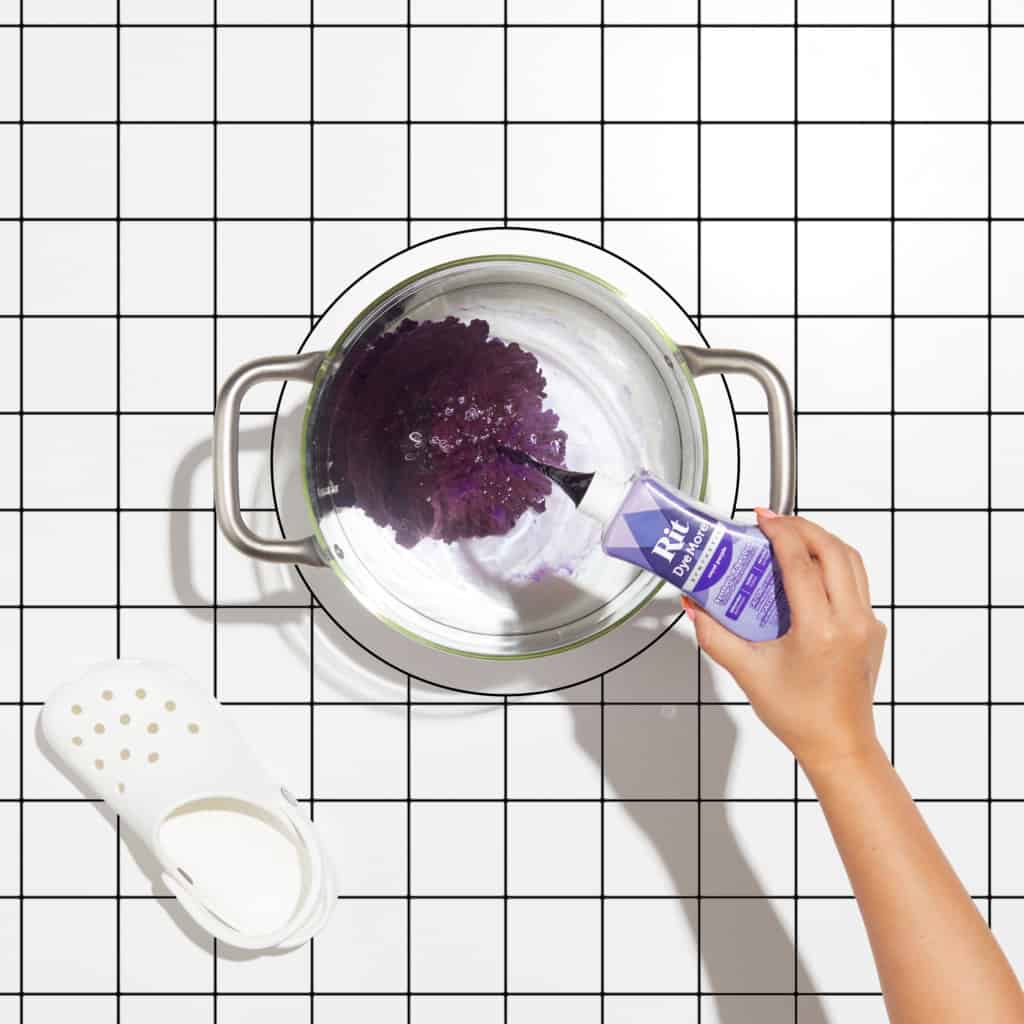
- Dip the clogs into the dyebath one at a time and move it side-to-side, stirring the dyebath until desired saturation is reached, roughly 3-5 minutes. Repeat to dip dye the straps.
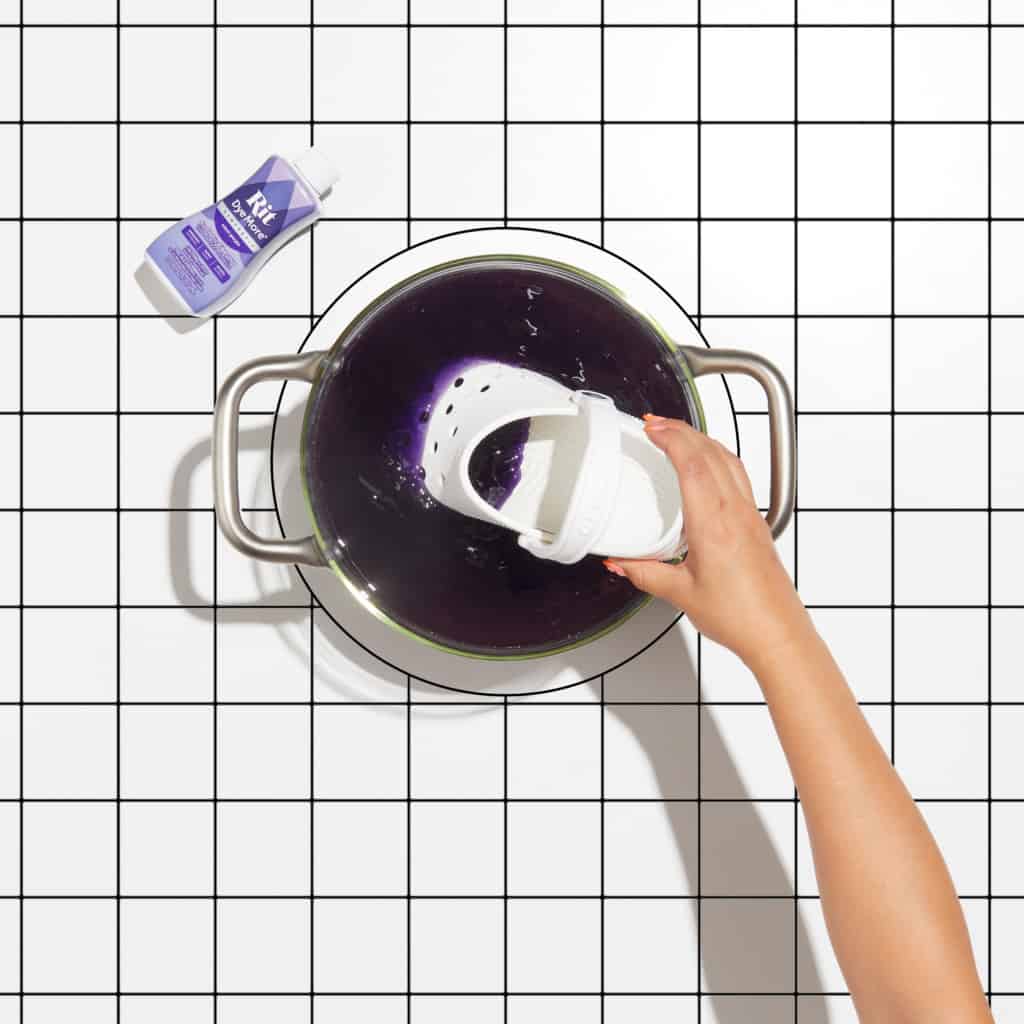
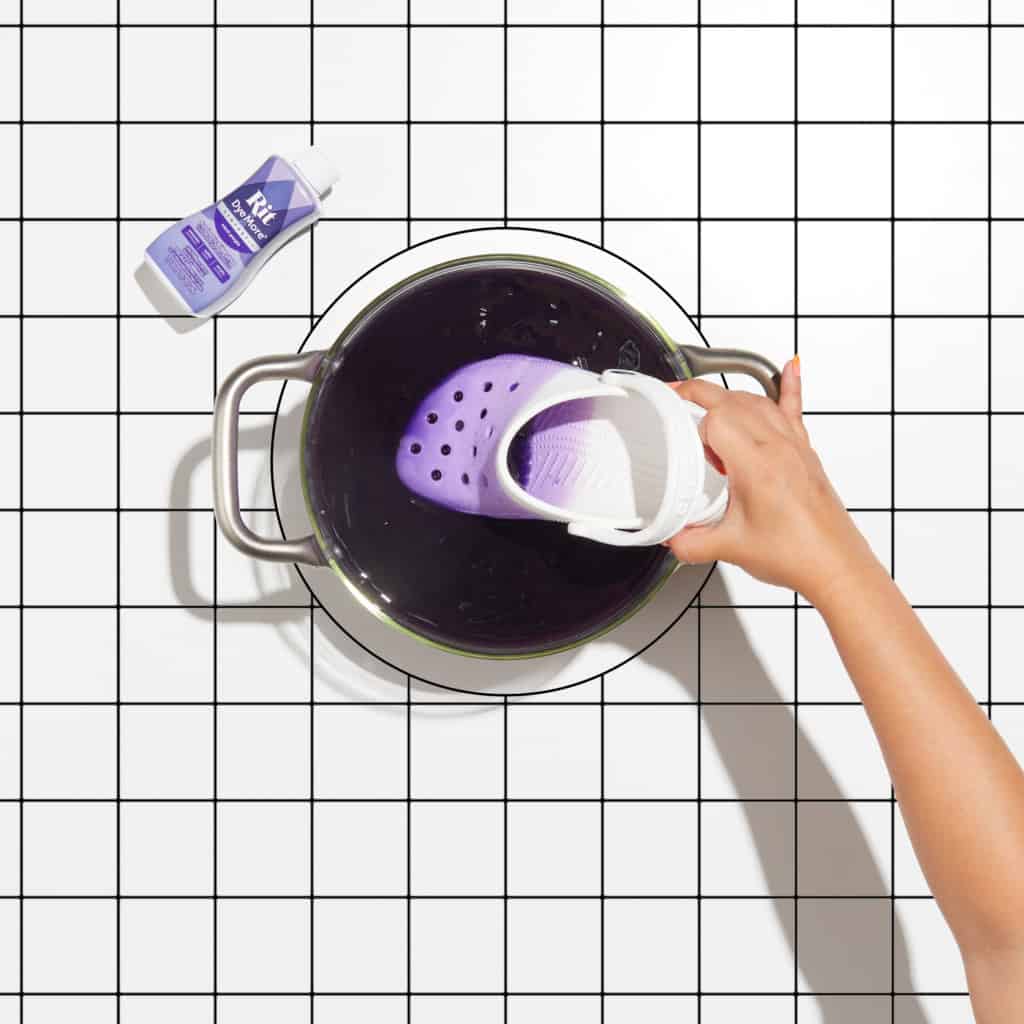
- Rinse dip dyed straps and clogs in cool water.
- Repeat steps 5-7 to create a second dyebath.

- Dip the other end of the clogs into the dyebath one at a time and move it side-to-side, stirring the dyebath until desired saturation is reached, roughly 3-5 minutes. Make sure to overlap with the first dip dyed area to create the ombré look.

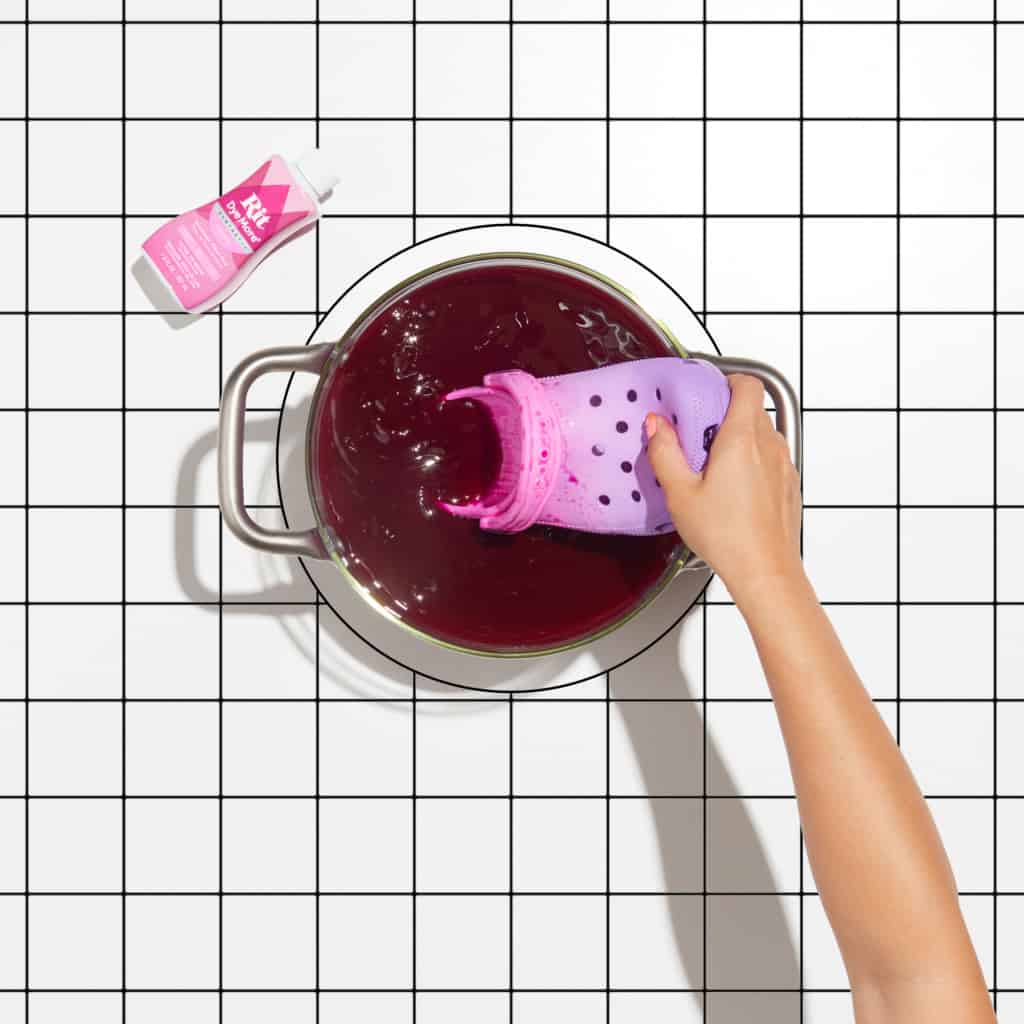
- Rinse clogs in warm water and dry off. If you notice any shrinkage, we recommending immediately walking around in the clogs with socks on while they’re warm and flexible. This will help stretch them out.
Posts You May Like
